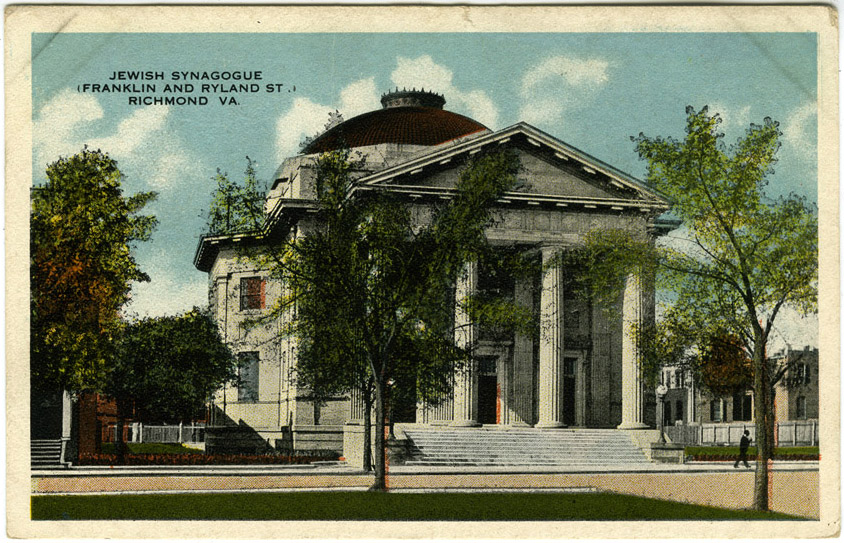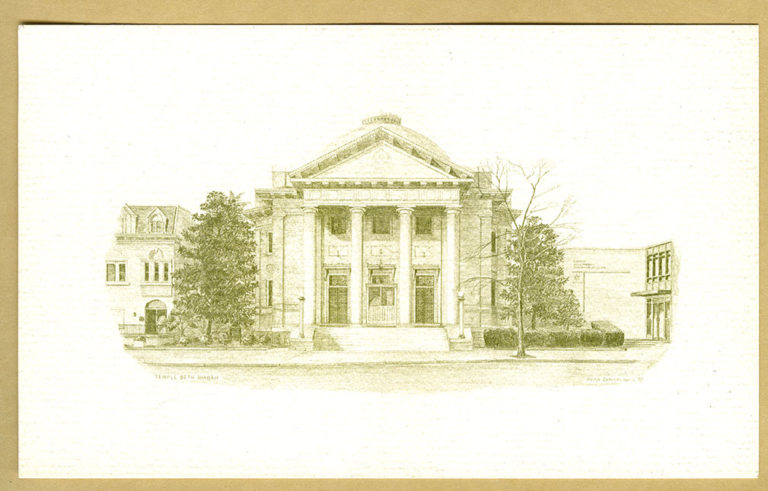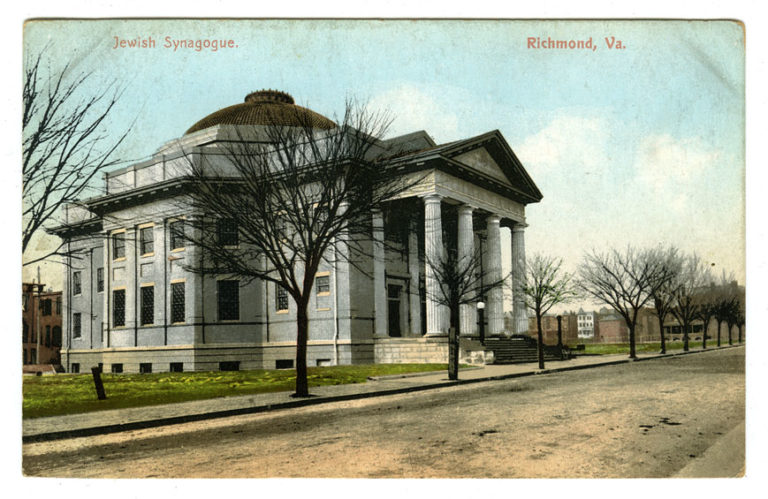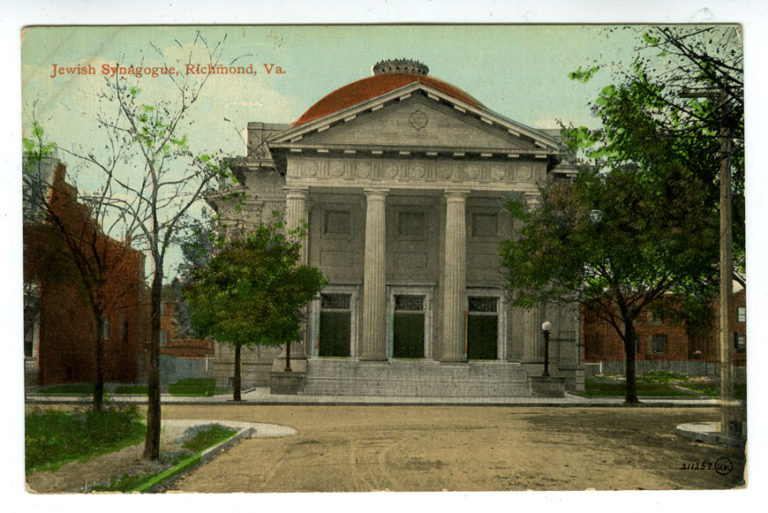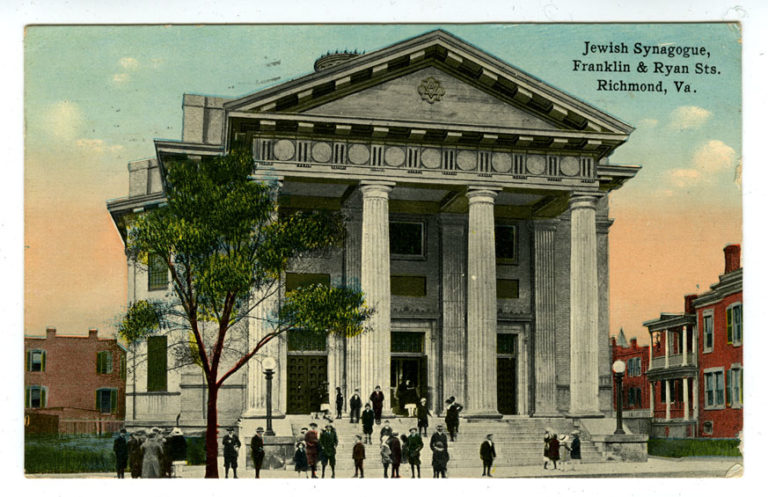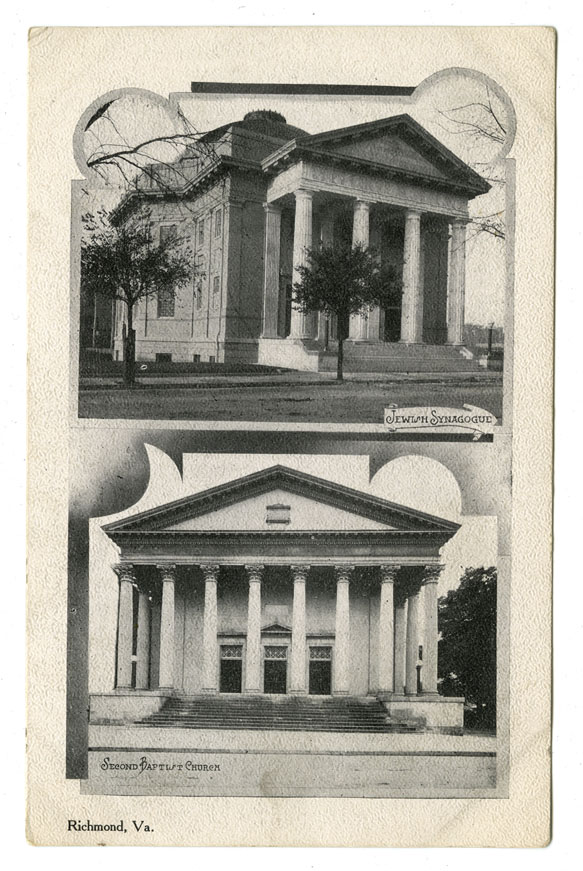6.5 Richmond, Virginia
Beth Ahabah, Franklin and Ryland streets
Noland and Baskerville, architects, 1904
Southern Bargain House, Richmond, Virginia, publisher; no date
This classical-style building, with a great central dome, is the congregation’s third home. Designed by Noland and Baskerville, Beth Ahabah (House of Love) recalls the Pantheon in Rome and a host of other central-plan domed monument structures, including Palladio’s Villa Rotondo in Vicenza, Italy, and, closer to home, Thomas Jefferson’s Rotunda at the University of Virginia in Charlottesville, completed in 1826.
According to Rabbi Edward Calisch, who was the driving force behind the new construction and the congregational move, “The corner stone was laid Friday, March 4, 1904, by Fraternal Lodge No. 53 A. F. and A. M. . . .” The building was dedicated on December 10 and 11, during Hanukkah week, 1904. The total cost of the lot, building, organ, and furnishings and furniture was a little more than $90,000—the equivalent of almost $3 million a century later.

Beth Ahabah had split in the early 19th century from Richmond’s first congregation, the Sephardic Beth Shalome, established in 1789. In 1839, several recent German-speaking immigrants founded a society known as Chevrah Ahabat Yisrael for charitable purposes, and in 1841, members decided to form a congregation for worship, too. They resolved “to establish a Synagogue for the German Israelites.” The group’s first place of worship was a house called the Seminarium. A few years later the building committee purchased a lot for a new purpose-built synagogue. The sanctuary was consecrated on September 22, 1848, and the first services took place that evening. Unfortunately, no detailed description of this building survives, nor any illustrations. The two first congregations reunited much later, in 1898.
A third congregation, Beth Israel, was founded in 1866. The following year its membership adopted the Minhag America prayer book and established a synagogue in a house on 7th Street, later moving to Washington Hall on Broad Street. Beth Israel lasted only a few years, however, before joining with the older Beth Ahabah, which had also been moving toward Reform. The merged congregation joined the Union of American Hebrew Congregations in 1875.
In 1880, Beth Ahabah erected its second building, an impressive structure that combined large round-arched windows with Gothic-style roof pinnacles, built on the site of the first synagogue. In 1904, when the congregation moved, the second building became the home of Congregation Sir Moses Montefiore.
